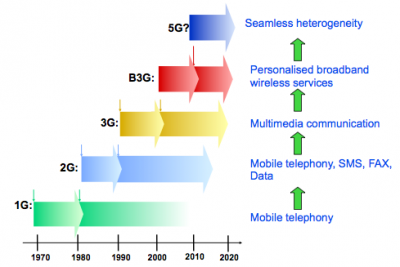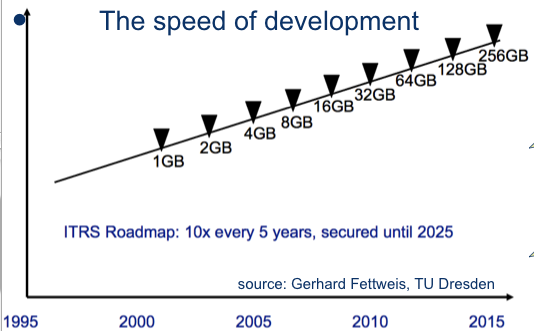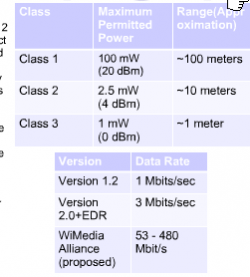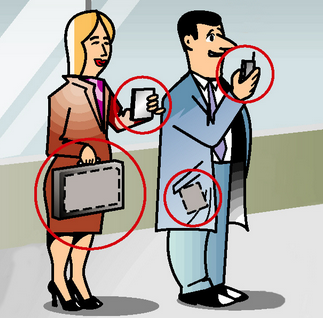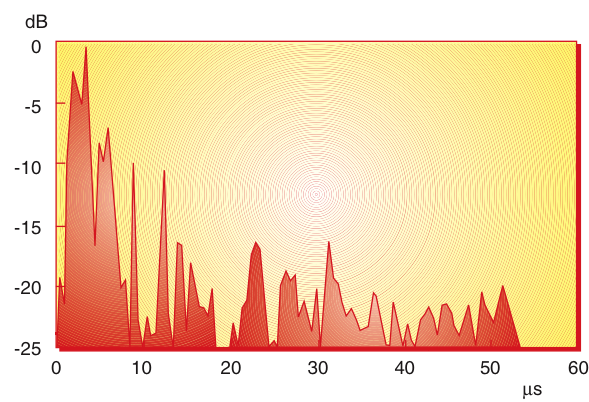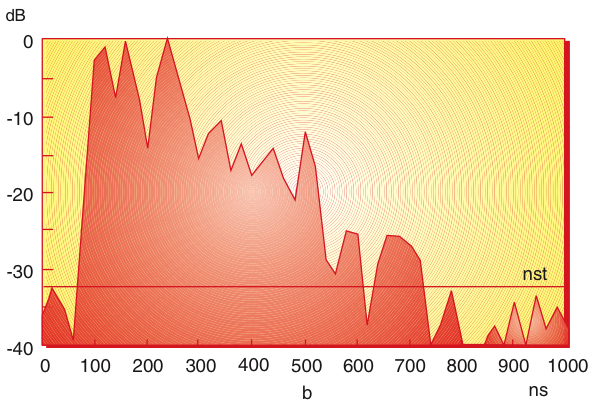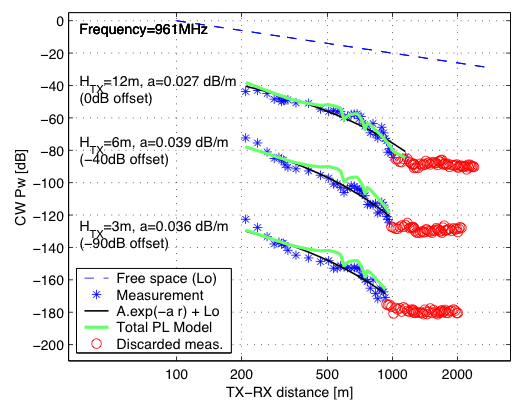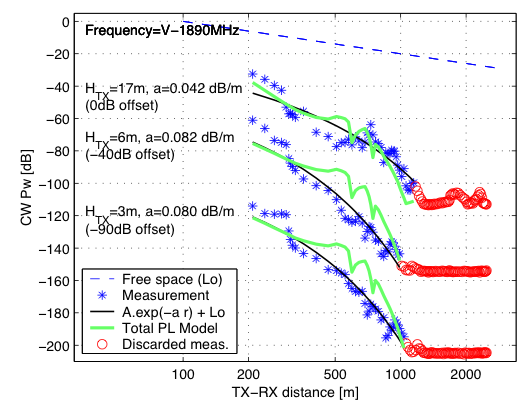Difference between revisions of "Environments for Mobile and Wireless Communications (C1-C3)"
Josef.Noll (Talk | contribs) (Created page with "{{Lecture |Course=UNIK4700, UNIK9700 |Title=Frequency Ranges and Propagation Models for Communications |Lecture date=2014/09/26 |time=0915-1145 |Lecturer=Raul, Yun Ai |Objecti...") |
Josef.Noll (Talk | contribs) |
||
| Line 20: | Line 20: | ||
=Related topics= | =Related topics= | ||
| − | {{:AA2- | + | {{:AA2-Mobile_Generations}} |
Revision as of 20:02, 21 September 2014
| Wiki for ITS | ||||||
|---|---|---|---|---|---|---|
|
Environments for Mobile and Wireless Communications (C1-C3)
| Course | UNIK4700, UNIK9700 |
|---|---|
| Title | Frequency Ranges and Propagation Models for Communications |
| Lecture date | 2014/09/26 0915-1145 |
| presented | by Raul, Yun Ai |
| Objective | Present the first assignments:
|
| Learning outcomes | * get feedback on how to structure a presentation
|
| Pensum (read before) | |
| References (further info) | |
| Keywords | Frequency, Propagation Models, Wifi, Mobile Systems |
this page was created by Special:FormEdit/Lecture, and can be edited by Special:FormEdit/Lecture/Environments for Mobile and Wireless Communications (C1-C3).
Presentations
Related topics
⌘AA2-Mobile Generations
⌘History of wireless communications
while 1G and 2G were all about radio interfaces,
- 3G and Beyond 3G (B3G) are all about services
- 4G is using mobile broadband everywhere
- 5G will be truly heterogeneous network
Comments
⌘Speed of technology
- "There might be a need for 5 computers" (1943 Watson(?), 1951 Hartree)
- Mobile: NMT, GSM, GPRS, EDGE, UMTS, 3G, HSDPA, SMS, EMS, MMS,... DVB-H,...
Comments
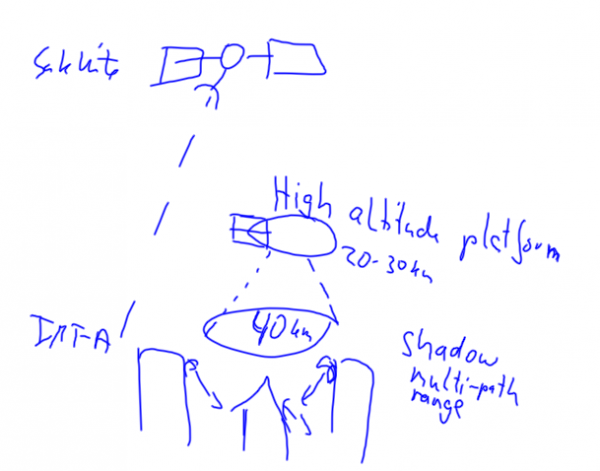 Future communication systems, composed of IMT-A (ground), High altitude platform (HAP) and satellite
Future communication systems, composed of IMT-A (ground), High altitude platform (HAP) and satellite
%Wireless standardisation forums
- ITU-T
- ETSI
- IEEE
- 3GPP (3G Partnership Project) and 3GPP2
- Bluetooth SIG, zigbee alliance
and a lot of others addressing interworking
- OMA (open mobile alliance)
- UMTS forum
- ...
⌘Frequency spectrum
⌘Wireless technologies
Ultra short range
- RFID, NFC
Vicinity
- Bluetooth, WiMedia,
- Zigbee, ANT+, Bluetooth Low Energy (BLE)
Local area
- Wireless LAN, 802.11 family
- Wireless telephony: DECT (Digital Enhanced Cordless Telecommunications)
Mobile Communications:
- 1G: NMT
- 2G: GSM
- 3G: UMTS
- 4G: LTE - IMT-A
- 5G
Long Range Wide Area Network (LPWAN)
- LoRa,
- Sigfox,
- Ingenu-RPMA,
- DASH7,
- Weightless
Mobile satellite communication:
- Geostationary (Inmarsat A, C, M) or low orbit (e.g. Iridium)
⌘Trend: Personal Networks
Interconnectivity
|
⌘Expectations towards global coverage
- According to Ericsson, Mobile Technologies are available for 50% of the world's population (2013), and the coverage will increase to 75% by 2017.
- According to Internet.org (Facebook, Opera Software, ....), only 1/3 of the world's population has access to the Internet (2013).
- An extrapolation by the Basic Internet Foundation points out that even in 2017 about 45% of the population will not have access to Internet, mainly due to affordability. Thus they promote the free access to basic information of the Internet, being text and pictures.
⌘Propagation scenario (ITU-R)
| Radio coverage [km2] | Distance [km] | speed of mobile [km/h] | type of cell | |
| Indoor office environment | 0.01 | 0.1 | 3 | picocell in open space environment |
| Pedestrian mode | 4 | 2 | 3 | Microcell |
| Vehicle | 150 | 13 | 120 | Macrocell |
- see page 31 of ETSI TR 101 120 report for test environments
- impact on walls?
⌘Propagation models
- Environments (indoor, outdoor to indoor, vehicular)
- outside (Lee, Okumura, Hata, Unik/COST231-Hata, Unik/COST231-Walfish-Ikegami)
- inside (One-slope, multiwall, linear attenuation)
References:
- T.K. Sarkar, J. Zhong, K. Kyungjung, A. Medouri, M. Salazar-Palma, "A survey of various propagation models for mobile communications", IEEE Ant. Prop. Magazine, 2003, 45(3) 51-82
- M Hata, "Empirical formula for propagationloss in land mobile radio service". IEEE Trans Vehicular Technology, 1980, vol 29, pp 317-325
- F Ikekami, S Yoshida, T Takeuchi, M Umehira, "Propagation factors controlling mean field strength on urban streets", IEEE Trans Ant. Prop., 1984, 32(8), 822-829
- T.S. Rappaport, S. Sandhu, "Rdaio Wave propagation for Emergin Wireless Personal Communication Systems", IEEE Ant. Prop. Magazine, 1994, 36(5), 14-23
we will focus only on ETSI models: statistical models to generate path losses and time delay structures for paths in each test environment.
(Source: Cost259, page 80ff, and ETSI TR 101 120)
⌘ Mobile Propagation References
References:
- Eurescom P921: UMTS radio access, http://www.eurescom.de D2-UMTS radio access
- ETSI / ITU propagation channels (Vehicular A/B, Outdoor to indoor A/B)
⌘ C2-Outdoor communications
⌘Measurements in rural farmland
- Typical IR from Farm_1, 1718 MHz. Total received power was –84 dBm, 20 dB above GSM sensitivity level
(Source:R Rækken, G. Løvnes, Telektronikk)
These questions are valid for all of the following impulse responses
- from delay, calculate reflection factor and free space attenuation
- describe characteristics of reflection
⌘ Measurements in rural farmland
- Typical IR from Farm_2, 953MHz. Total received power was <93dBm
(Source:R Rækken, G. Løvnes, Telektronikk)
⌘Measurements in cities
- Typical IR from City street measurements, 1950 MHz, Oslo. Output power 25 dBm ( in mW?). Omnidirectional
-Dipoles used as transmit and receive antennas.
(Source:R Rækken, G. Løvnes, Telektronikk)
why almost equal distribution? What effect?
⌘ETSI urban pedestrian
- Outdoor to indoor and pedestrian test environment, based on Non LOS (NLOS)
- Base stations with low antenna height are located outdoors, pedestrian users are located on streets and inside buildings and residences
- TX power is 14 dBm, f = 2000 MHz and r is distance in m
- Assumes average building penetration loss of 12 dB
- Path loss model:
[dB]
⌘COST Walfish-Ikegami Model
- taking into consideration propagation over roof tops
- assumes antennas below roof top
- Path loss model:
[dB]
⌘Alternative Street Microcell Path-loss
- Outdoor propagation, consists of "adding of paths"
- c is angle of street crossing. c = 0.5 for 90 deg crossing
- k_0 = 1 and d_0 = 0
- Path loss model:
[dB]
- illusory distance
with
⌘ETSI vehicular
- larger cells (typical few km)
- TX power 24 dBm for mobile phone, transmit antenna height
over roof top (typical 15 m), distance r in km, f = 2000 MHz
- Path loss model:
[dB]
⌘Forest, 961 MHz measurements
- slightly hilly terrain
(Source:István Z.Kovács,Ph.D.Lecture,CPK, September6, 2002;p.27/45 )
⌘Forest, 1890 MHz measurements
- slightly hilly terrain
(Source:István Z.Kovács,Ph.D.Lecture,CPK, September6, 2002, p.27/45)
⌘Examples
establish table (L free space, pedestrial, outdoor, ...) with typical values for 900 and 2000 MHz and distances from 100 to 3000 m
⌘ETSI Indoor Office test environment
- derived from COST 231
- r is transmitter-receiver distance in m; n is number of floors in the path
- path loss L should always be more than free space loss. Log-normal shadow fading standard deviation of 12 dB
- Path loss model:
[dB]
⌘Modelling approach - indoor
Typical ETSI parameters: 8 kbps, BER < 10'^-3^', 20 ms delay, 50 % activity
(Source:Radio Wave Propagation for Telecommunication, Springer, and ETSI TR 101 112 V3.2.0 (1998-04))
Next lecture D1 Proximity Systems such as NFC, RFID
